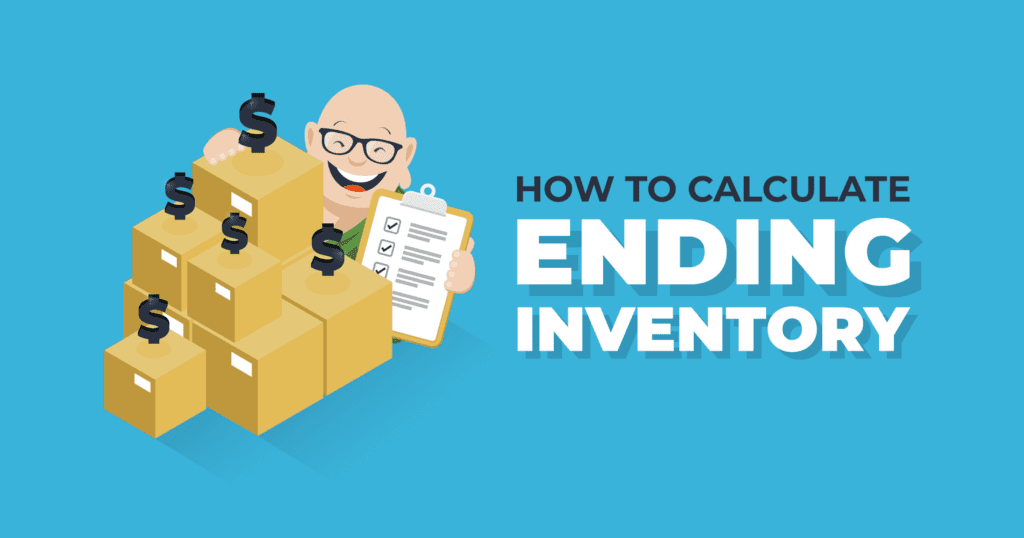
Managing inventory is a critical aspect of running a successful business, and one key component of this is understanding ending inventory. It’s not just a financial term; it’s a dynamic indicator of a company’s financial health and operational efficiency. In this post, we will delve deep into the intricacies of this vital concept. From its definition and calculation methods to its significance in financial reporting, inventory turnover, and supply chain management. e’ll explore every facet of ending inventory to equip you with the knowledge needed to make informed decisions that can impact the bottom line of your business.
What is ending inventory?

Ending inventory, also known as closing inventory or ending stock, refers to the total value of goods, products, or materials that a business has on hand at the end of a specific accounting period, such as a fiscal quarter or year. It is a critical component of a company’s balance sheet and plays a significant role in financial reporting, inventory management, and cost of goods sold (COGS) calculations.
How to Calculate Ending Inventory

Calculating ending inventory involves determining the total value of goods, products, or materials that a business has on hand at the end of an accounting period. The method used to calculate ending inventory depends on the inventory valuation method employed by the business. Three common methods for calculating ending inventory are the FIFO (First-In-First-Out), LIFO (Last-In-First-Out), and Weighted Average methods. Here’s how to calculate ending inventory using each of these methods:
FIFO (First-In-First-Out) Method:
The FIFO method assumes that the items that were acquired or produced first are the ones that are sold or used first. To calculate using FIFO:
a. Determine the cost of the oldest items (the items acquired or produced first) that are still in inventory.
b. Multiply the quantity of those items by their unit cost.
c. Repeat this process for each batch of items until you’ve accounted for all the items in inventory.
d. Sum up the costs calculated in step (b) for each batch to find the total value of ending inventory.
LIFO (Last-In-First-Out) Method:
The LIFO method assumes that the items that were acquired or produced last are the ones that are sold or used first. To calculate using LIFO:
a. Determine the cost of the most recent items (the items acquired or produced last) that are still in inventory.
b. Multiply the quantity of those items by their unit cost.
c. Repeat this process for each batch of items until you’ve accounted for all the items in inventory.
d. Sum up the costs calculated in step (b) for each batch to find the total value of ending inventory.
Weighted Average Method:
The weighted average method calculates the average cost per unit of inventory and applies that cost to all units in ending inventory. To calculate ending inventory using the weighted average method:
a. Add up the total cost of goods available for sale during the accounting period (beginning inventory + purchases or production costs).
b. Add up the total number of units available for sale during the accounting period.
c. Divide the total cost from step (a) by the total units from step (b) to calculate the weighted average cost per unit.
d. Multiply the weighted average cost per unit by the number of units in ending inventory to find the total value of ending inventory.
It’s important to note that the choice of inventory valuation method can have significant implications for a company’s financial statements and taxes. Additionally, businesses may need to adhere to specific accounting principles or regulations when selecting an inventory valuation method. Therefore, it’s advisable to consult with an accountant or financial expert to ensure that the chosen method aligns with accounting standards and regulatory requirements.
Why is ending inventory important?

It is a critical component of a company’s financial management and reporting. Its importance extends to various aspects of a business’s operations and financial health. Here are some reasons why It is important:
Financial Reporting
is a key element in a company’s financial statements, specifically on the balance sheet. It represents an asset on the balance sheet, and its value directly affects a company’s financial position. Accurate recording of ending inventory is essential for presenting a true and fair view of a company’s financial health to stakeholders, including investors, creditors, and regulators.
Cost of Goods Sold (COGS)
It plays a pivotal role in calculating the cost of goods sold (COGS), which is a fundamental expense for businesses, especially those involved in manufacturing or retail. The COGS calculation is as follows:
COGS = Beginning Inventory + Purchases (or production costs) – Ending Inventory
By accurately determining ending inventory, a business can calculate COGS, which impacts its profitability and tax liability. It provides a clear picture of the cost of producing or acquiring goods that were sold during a specific accounting period.
Profitability Analysis
is directly tied to a company’s gross profit. Gross profit is calculated by subtracting COGS from total revenue. Understanding the value of ending inventory enables businesses to assess their profitability, identify trends, and make informed decisions regarding pricing strategies and cost management.
Inventory Management
helps businesses optimize their inventory levels. By knowing the value of items on hand at the end of an accounting period, a company can adjust its procurement, production, and storage strategies. This leads to better management of working capital, reduced carrying costs, and avoidance of overstocking or stockouts.
Tax Implications
Accurate reporting of ending inventory can have significant tax implications. Different inventory valuation methods (e.g., FIFO, LIFO, weighted average) can result in different levels of taxable income. Businesses may choose inventory valuation methods strategically to minimize their tax liabilities while remaining compliant with tax regulations.
In summary, is essential for financial reporting, cost management, profitability analysis, and inventory optimization. It impacts a company’s financial statements, including the balance sheet and income statement, and helps stakeholders assess the company’s financial health and operational efficiency. Accurate and consistent recording of it is critical for making informed business decisions and complying with accounting and tax regulations.
What is the difference between Ending inventory and closing inventory
They are terms that are often use interchangeably, and in many contexts, they mean the same thing. Both refer to the total value of goods, products, or materials that a business has on hand at the end of a specific accounting period, such as a fiscal quarter or year. This inventory is typically record on the company’s balance sheet as an asset.
However, it’s worth noting that the choice of terminology can sometimes depend on regional or industry-specific conventions. In some regions or industries, “ending inventory” might be the more commonly used term. hile in others, “closing inventory” may be preferred. The essential concept and calculation are the same regardless of the terminology used.
In summary, both “ending inventory” and “closing inventory” refer to the same concept—the total value of inventory at the end of an accounting period—and the terms can be used interchangeably in most contexts.